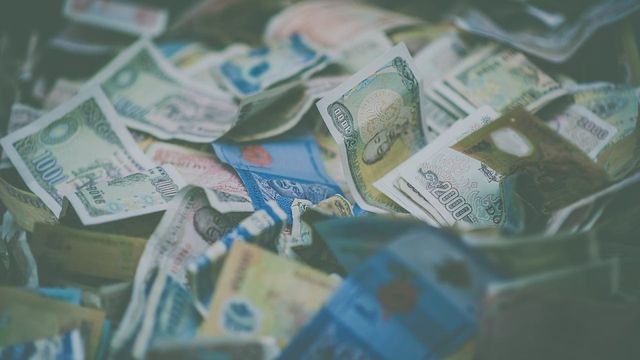How to get the best exchange rate abroad

Fees differ depending on the payment method used: credit card, debit card or cash. Here are tips to limit the bill.
If you're planning a trip abroad in the coming months, you shouldn't just be wondering whether your activity schedule is too busy, whether the apartment you've rented has air conditioning, or whether your two tubes of sunscreen will be enough for the whole family. You should also plan how to make your payments once you arrive at your destination. Because the costs can be numerous.
“You have to establish a strategy before departure so as not to give in to local sirens,” says Jean-Maximilien Voisine, founding president of Milesopedia , a website that offers a comparison of credit cards and loyalty programs (also a partner of News for creating your own comparison tool).
The “sirens” he speaks of are the exchange offices located in tourist places, which apply inflated rates, the ATMs with multiple fees or even the foreign merchants who offer you to pay in American or Canadian dollars, by keeping a rating along the way.
Bottom line, this magnificent sweater reminding you of the sound of the waves, sold for $50 US, will actually cost you (according to the current exchange rate) $67.54 CAD with a credit card without currency conversion fees, 69 .22 CAD with a debit card and even a little more with money withdrawn from an ATM.
If you are wondering, there are not exchange rates, but rather an exchange rate for each currency, which evolves continuously according to supply and demand on the global market. It is not set by any authority, but by the market, and it is the same for everyone. When you see different exchange rates in different places for the same currency, then the exchange office or card issuing institution is adding fees (such as conversion fees, commission, etc.).
Cash, debit card or credit card: your choice of payment method abroad will depend partly on the country visited and local habits (in open-air markets and taxis it is often easier to pay cash). But whatever the formula, it is possible to limit costs.
Credit card: a good option
As a general rule, it is best to pay for your foreign transactions with your credit card, when possible, says Jean-Maximilien Voisine. You will obtain the exchange rate of Visa or Mastercard , of which you can have an estimate online. You will have to pay what is called a "conversion fee", generally 2.5%, which is difficult to escape, but which is still competitive compared to other options. And you'll earn rewards points if your card offers them.
“Please note that conversion fees are included in the exchange rate, so they will not appear on your credit card statement. Cards that do not charge conversion fees will have a lower exchange rate,” explains Jean-Maximilien Voisine.
To avoid these conversion fees, you can get one of the rare credit cards that do not impose them (our comparator lists a few). Be careful, however, with annual membership fees, which can be high and in some cases even reach a few hundred dollars per year.
Oh, and one thing to never forget: if, when paying with a credit card on a foreign terminal, the device offers you to be billed in Canadian dollars or in the local currency, always opt for the local currency. “If you choose to pay in Canadian dollars, the merchant will apply exchange fees which will be disastrous. It can be 3% or 4%, but it can go up to 10%, plus conversion fees and the exchange rate.”
Prepaid cards: yes, but not those from the convenience store
To avoid currency conversion fees, there is another option: get your hands on a prepaid credit card with no conversion fees, which you can reload from your bank account as needed, such as KOHO or CIBC AC Prepaid Visa with no conversion fees.
Please note, these are not the Vanilla Visa or Mastercard gift cards that you can buy at the pharmacy or convenience store (which are not reloadable and charge a 2.5% currency conversion fee).
Unlike the majority of “traditional” credit cards, however, prepaid cards offer little or no rewards on your purchases.
Debit card: interesting, but not always accepted
Another option, the debit card, has its pros and cons. You will have to pay a conversion fee (usually 2.5%) like with a traditional credit card. If you want to use it to pay for a dinner abroad, however, the payment terminal that the server gives you must be compatible with your financial institution's network. For example, National Bank customers must locate terminals on the Cirrus, Maestro and NYCE networks. Also keep in mind that your financial institution may impose a daily payment limit on you.
Cash: withdraw with care
Finally, if, out of nostalgia or necessity, you want to pay in cash, be very careful. According to David Dupuis, lecturer in the Department of Economics at the University of Sherbrooke, it is absolutely necessary to avoid exchange offices located in airports or near must-see attractions, which are tourist traps with their very high rates. Depending on the destination, it may be interesting to exchange a little money before departure.
Once there, you can compare the rates of different exchange offices in town, or withdraw money with your debit card. In this case, the exchange rate applied will be that of your Quebec bank, but beware of the fees imposed: those for access to the network (generally three dollars in North America and five dollars elsewhere in the world), those of the counter that you use (fixed amount, variable from one device to another), plus a 2.5% conversion fee. It is therefore better to withdraw one larger sum than several smaller ones, as the fixed fees are charged each time.